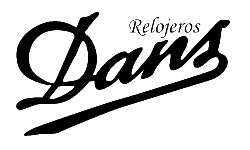DanThunderbolt
Milpostista
Sin verificar
Divulgativo artículo con modelos conocidos por todos, pero curiosamente publicado en una web dedicada a coches clásicos.
Keep Time in Style with a Vintage Chronograph
Sometimes being a Petrolisti is about more than just automobiles. It’s about a feeling, an essence distilled in pure form in our beloved Alfas, Porsches, and Jags. This essence, however, exists in many forms, expressed in artwork, apparel, and countless other outlets. Some of the most overlooked, in this age of checking time, weather, sports scores, Facebook feeds, and ten thousand other things on smartphones, are watches. Watches, especially mechanically driven examples, in many ways, are not unlike an early 911. Beautifully engineered for a singular purpose, there may be more accurate, more practical, and far cheaper ways nowadays to accomplish the job, but nothing else has the same feel or charisma. Nothing else gives you that raw, mechanical connection to what’s going on. Perhaps the most automotive-minded group of watches are the chronographs. With the advent of the automatic (self-winding) chronograph in 1969, the chrono became a staple of motorsport, with the likes of Jackie Stewart and Jo Siffert proudly flashing their Rolexes and Heuers in paddocks from Kyalami to Le Mans.
Compiled here is a cross-section of chronographs that captured that essence. These watches run across the market from around $150 to $15,000, and come from such varied places as Switzerland, Japan, and Russia.
The Heuer Triplets



Starting off this list are three absolute icons from a legendary manufacturer. TAG Heuer, formerly simply Heuer, has perhaps the longest, most visible connection to racing and the automotive world of all. They’ve been sponsors to John Wyer’s Gulf GT40s and 917s at Le Mans, were longtime partners with Scuderia Ferrari, and have sponsored countless other drivers, teams, and races over the years. On the actual watchmaking side, the Swiss manufacturer produced what could be the world’s first automatic chronograph movement in 1969 (more on that later), the Calibre 11. The Calibre 11 was the heart of several Heuer designs; the most famous of those are the Monaco, the Autavia, and the Silverstone.
The Heuer Monaco is by far the best known of these, thanks to its appearance with Steve McQueen in Le Mans. The square-faced chrono design has aged incredibly well, and has cemented its status as a “Holy Grail watch” for many collectors. TAG Heuer still makes the Monaco to this day, however with an updated movement. Be prepared to pay around $5000 for a new one, with prices ranging from around $2500 for tired runners to nearly $10,000 for mint-condition desirable models on the vintage market.
The Autavia is the second of the three, and is a bit more conservatively designed than the other two. It’s still a fantastic-looking piece, however, and it’s still extremely collectible. Prices on these can vary wildly based on edition, from around $1500 for the common “Viceroy” model to between $10,000 to $15,000 for the “Jo Siffert” variant shown here.
The Silverstone is, in some ways, the most interesting of the bunch. Introduced in the mid-70’s as an update to what was then seen as the aging design of the Monaco, with hindsight, it’s more of a period piece than its sister. There’s no denying the Silverstone is a vintage watch, all rounded edges and chromed curves. That’s not necessarily a bad thing. Silverstones are somewhat harder to come by than the other two, with an average price point right around $2500 for the burgundy and Fume (brown) versions, with blue-dialed examples trending a bit higher.
The Omega Speedmaster


Omega may not have the racing pedigree of Heuer, but they have watchmaking roots going back to the 1800s and have some of the most prestigious histories in the horological world. The Speedmaster is actually an older design than the rest listed here, and transitioned from hand-wind to automatic in 1969. The simple black dial is a timeless look, and has without a doubt the coolest talking point of ANY watch: the Omega Speedmaster was the first watch on the Moon. Buzz Aldrin wore his NASA-issue Speedmaster on the first moonwalk in July 1969, and nearly as impressive is the fact that it was the only piece of equipment on Apollo 11 that wasn’t specifically designed to go to the Moon. Omega still churns out Speedmasters to this day, and with a multitude of different sizes, styles, movements, and editions. On the low end, the Speedmaster Reduced can be found for around $1500, with limited-edition Moonwatch examples going for around $4,000.
The Seiko 6139 Series



Japanese manufacturer Seiko may not have the brand prestige of some other companies. In a way, they’re the Honda of the watchmaking world: producing massive numbers of staid, uninteresting pieces for the general public. But every once in a while, like Honda, they release something extraordinary that shows the world what they’re really capable of, something like the NSX. While Swiss companies like Heuer and Omega were celebrating the release of their automatic chronographs in early 1969, half a world away in Japan, Seiko was quietly revealing one of their own: the 6139. The 6139 was produced in a head-spinning array of variants from 1969 to the mid-1980s, each with its own bespoke case, colors, and options. Two to watch for are the 6139-600X series, with its own NASA history and dazzling array of available colors, and the 6139-701X series, nicknamed the “Helmet” for its unique, and incredibly thick, case. These watches are some of the cheapest ways into chronograph ownership available, with runners available from around $150, to mint-condition examples sometimes fetching $500 or a bit more.
The Poljot OKEAH


Russia isn’t a country typically associated with fine watchmaking the way Switzerland is. Don’t let that heritage turn you off to the charms of this chronograph. Poljot has been making timepieces since the mid-50’s in Russia, and like many Russian-engineered things, they’re heavy, reliable, and absolutely bulletproof. The OKEAH (Cyrillic for ocean) is one of the finest pieces ever to come out of that corner of the world, and its Soviet-era design clearly draws from other influences than its Western counterparts. The two-tone dial is stunning, and the case itself is unconventionally handsome. Prices for these are generally low as well, ranging from around $400 to $800, but are on the upswing as they’ve recently been phased out of production.
The Rolex Daytona

Rolex. Nothing else in the watch world comes close in terms of brand cachet, and that’s not without reason. The average person likely won’t recognize an Omega or Heuer, but the famous crown branding demands instant recognition. Their chronograph, the Daytona, is a motorsport legend in its own right, famously gracing the wrists of Jackie Stewart and Paul Newman. It’s another older design that made the jump to automatic, being available in manual-wind from since 1963 and as an automatic since 1988. It’s another timeless design, available in countless dial colors, finishes, and variants. One of the rarest and most desirable of these is the “Paul Newman” variant shown here, with good examples trading anywhere from $10-15,000 depending on several factors. The low end of the Daytona market nowadays sits at around $7000.
The chronograph market is just as varied and deep as the classic car market, and this is just a taste of what’s out there. There’s a whole world, and there’s a vintage chrono that’s sure to capture your essence.
¿Sobra o falta alguno?
De: petrolicious.com
Keep Time in Style with a Vintage Chronograph
Sometimes being a Petrolisti is about more than just automobiles. It’s about a feeling, an essence distilled in pure form in our beloved Alfas, Porsches, and Jags. This essence, however, exists in many forms, expressed in artwork, apparel, and countless other outlets. Some of the most overlooked, in this age of checking time, weather, sports scores, Facebook feeds, and ten thousand other things on smartphones, are watches. Watches, especially mechanically driven examples, in many ways, are not unlike an early 911. Beautifully engineered for a singular purpose, there may be more accurate, more practical, and far cheaper ways nowadays to accomplish the job, but nothing else has the same feel or charisma. Nothing else gives you that raw, mechanical connection to what’s going on. Perhaps the most automotive-minded group of watches are the chronographs. With the advent of the automatic (self-winding) chronograph in 1969, the chrono became a staple of motorsport, with the likes of Jackie Stewart and Jo Siffert proudly flashing their Rolexes and Heuers in paddocks from Kyalami to Le Mans.
Compiled here is a cross-section of chronographs that captured that essence. These watches run across the market from around $150 to $15,000, and come from such varied places as Switzerland, Japan, and Russia.
The Heuer Triplets



Starting off this list are three absolute icons from a legendary manufacturer. TAG Heuer, formerly simply Heuer, has perhaps the longest, most visible connection to racing and the automotive world of all. They’ve been sponsors to John Wyer’s Gulf GT40s and 917s at Le Mans, were longtime partners with Scuderia Ferrari, and have sponsored countless other drivers, teams, and races over the years. On the actual watchmaking side, the Swiss manufacturer produced what could be the world’s first automatic chronograph movement in 1969 (more on that later), the Calibre 11. The Calibre 11 was the heart of several Heuer designs; the most famous of those are the Monaco, the Autavia, and the Silverstone.
The Heuer Monaco is by far the best known of these, thanks to its appearance with Steve McQueen in Le Mans. The square-faced chrono design has aged incredibly well, and has cemented its status as a “Holy Grail watch” for many collectors. TAG Heuer still makes the Monaco to this day, however with an updated movement. Be prepared to pay around $5000 for a new one, with prices ranging from around $2500 for tired runners to nearly $10,000 for mint-condition desirable models on the vintage market.
The Autavia is the second of the three, and is a bit more conservatively designed than the other two. It’s still a fantastic-looking piece, however, and it’s still extremely collectible. Prices on these can vary wildly based on edition, from around $1500 for the common “Viceroy” model to between $10,000 to $15,000 for the “Jo Siffert” variant shown here.
The Silverstone is, in some ways, the most interesting of the bunch. Introduced in the mid-70’s as an update to what was then seen as the aging design of the Monaco, with hindsight, it’s more of a period piece than its sister. There’s no denying the Silverstone is a vintage watch, all rounded edges and chromed curves. That’s not necessarily a bad thing. Silverstones are somewhat harder to come by than the other two, with an average price point right around $2500 for the burgundy and Fume (brown) versions, with blue-dialed examples trending a bit higher.
The Omega Speedmaster


Omega may not have the racing pedigree of Heuer, but they have watchmaking roots going back to the 1800s and have some of the most prestigious histories in the horological world. The Speedmaster is actually an older design than the rest listed here, and transitioned from hand-wind to automatic in 1969. The simple black dial is a timeless look, and has without a doubt the coolest talking point of ANY watch: the Omega Speedmaster was the first watch on the Moon. Buzz Aldrin wore his NASA-issue Speedmaster on the first moonwalk in July 1969, and nearly as impressive is the fact that it was the only piece of equipment on Apollo 11 that wasn’t specifically designed to go to the Moon. Omega still churns out Speedmasters to this day, and with a multitude of different sizes, styles, movements, and editions. On the low end, the Speedmaster Reduced can be found for around $1500, with limited-edition Moonwatch examples going for around $4,000.
The Seiko 6139 Series



Japanese manufacturer Seiko may not have the brand prestige of some other companies. In a way, they’re the Honda of the watchmaking world: producing massive numbers of staid, uninteresting pieces for the general public. But every once in a while, like Honda, they release something extraordinary that shows the world what they’re really capable of, something like the NSX. While Swiss companies like Heuer and Omega were celebrating the release of their automatic chronographs in early 1969, half a world away in Japan, Seiko was quietly revealing one of their own: the 6139. The 6139 was produced in a head-spinning array of variants from 1969 to the mid-1980s, each with its own bespoke case, colors, and options. Two to watch for are the 6139-600X series, with its own NASA history and dazzling array of available colors, and the 6139-701X series, nicknamed the “Helmet” for its unique, and incredibly thick, case. These watches are some of the cheapest ways into chronograph ownership available, with runners available from around $150, to mint-condition examples sometimes fetching $500 or a bit more.
The Poljot OKEAH


Russia isn’t a country typically associated with fine watchmaking the way Switzerland is. Don’t let that heritage turn you off to the charms of this chronograph. Poljot has been making timepieces since the mid-50’s in Russia, and like many Russian-engineered things, they’re heavy, reliable, and absolutely bulletproof. The OKEAH (Cyrillic for ocean) is one of the finest pieces ever to come out of that corner of the world, and its Soviet-era design clearly draws from other influences than its Western counterparts. The two-tone dial is stunning, and the case itself is unconventionally handsome. Prices for these are generally low as well, ranging from around $400 to $800, but are on the upswing as they’ve recently been phased out of production.
The Rolex Daytona

Rolex. Nothing else in the watch world comes close in terms of brand cachet, and that’s not without reason. The average person likely won’t recognize an Omega or Heuer, but the famous crown branding demands instant recognition. Their chronograph, the Daytona, is a motorsport legend in its own right, famously gracing the wrists of Jackie Stewart and Paul Newman. It’s another older design that made the jump to automatic, being available in manual-wind from since 1963 and as an automatic since 1988. It’s another timeless design, available in countless dial colors, finishes, and variants. One of the rarest and most desirable of these is the “Paul Newman” variant shown here, with good examples trading anywhere from $10-15,000 depending on several factors. The low end of the Daytona market nowadays sits at around $7000.
The chronograph market is just as varied and deep as the classic car market, and this is just a taste of what’s out there. There’s a whole world, and there’s a vintage chrono that’s sure to capture your essence.
¿Sobra o falta alguno?
De: petrolicious.com




 :
: finalmente decir que a mi parecer falta algun breitling...
finalmente decir que a mi parecer falta algun breitling...